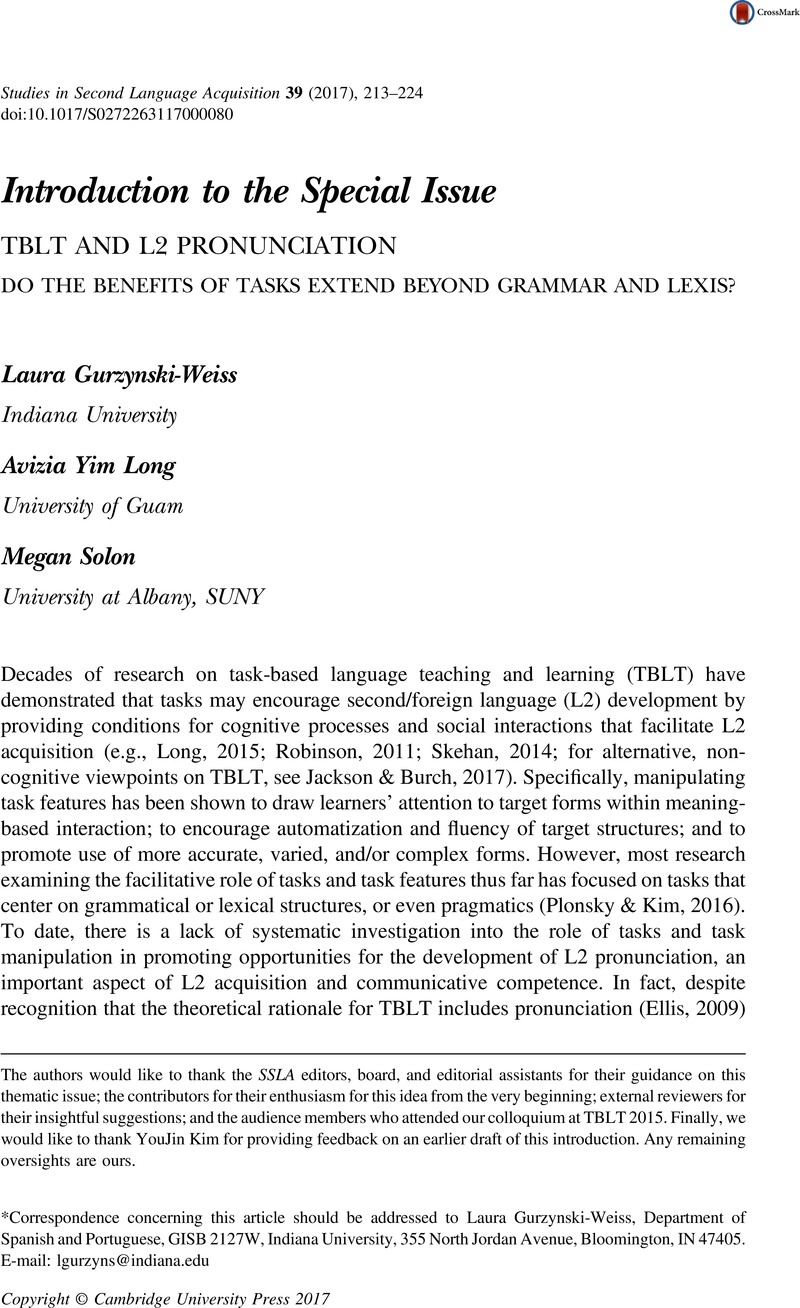Crossref Citations
This article has been cited by the following publications. This list is generated based on data provided by Crossref.
Gurzynski-Weiss, Laura
and
Plonsky, Luke
2017.
Expanding Individual Difference Research in the Interaction Approach.
Vol. 16,
Issue. ,
p.
306.
Loewen, Shawn
and
Sato, Masatoshi
2018.
Interaction and instructed second language acquisition.
Language Teaching,
Vol. 51,
Issue. 3,
p.
285.
Taguchi, Naoko
and
Kim, YouJin
2018.
Task-Based Approaches to Teaching and Assessing Pragmatics.
Vol. 10,
Issue. ,
p.
2.
Wisniewska, Natalia
and
Mora, Joan C.
2020.
CAN CAPTIONED VIDEO BENEFIT SECOND LANGUAGE PRONUNCIATION?.
Studies in Second Language Acquisition,
Vol. 42,
Issue. 3,
p.
599.
Gurzynski-Weiss, Laura
2020.
Cross-theoretical Explorations of Interlocutors and their Individual Differences.
Vol. 53,
Issue. ,
p.
4.
Barón, Júlia
Celaya, M. Luz
and
Levkina, Mayya
2020.
Learning pragmatics through tasks.
Applied Pragmatics,
Vol. 2,
Issue. 1,
p.
1.
Gordon, Joshua
2021.
Pronunciation and Task-Based Instruction: Effects of a Classroom Intervention.
RELC Journal,
Vol. 52,
Issue. 1,
p.
94.
Mora-Plaza, Ingrid
Ortega, Mireia
and
Mora, Joan C.
2022.
Theoretical and Practical Developments in English Speech Assessment, Research, and Training.
p.
241.
Gilabert, Roger
2023.
Where SLA and Language Education Meet: The Transfer from Task-Based Needs Analysis to Task Design.
Education Sciences,
Vol. 13,
Issue. 10,
p.
1015.
Crowther, Dustin
and
Isbell, Daniel R.
2023.
Second language speech comprehensibility: A research agenda.
Language Teaching,
p.
1.
Zhang, Ying
2023.
The Influence of Game-Enhanced Communication on EFL Learners’ Pragmatic Competence in Compliment Responses.
Applied Linguistics,
Nagle, Charles
Sachs, Rebecca
and
Zárate-Sández, Germán
2023.
Spanish teachers’ beliefs on the usefulness of pronunciation knowledge, skills, and activities and their confidence in implementing them.
Language Teaching Research,
Vol. 27,
Issue. 3,
p.
491.
Mora-Plaza, Ingrid
Mora, Joan C.
Ortega, Mireia
and
Aliaga-Garcia, Cristina
2024.
Is L2 pronunciation affected by increased task complexity in pronunciation-unfocused speaking tasks?.
Studies in Second Language Acquisition,
p.
1.
Fullana, Natalia
Mora-Plaza, Ingrid
Mora, Joan C.
Adrian, Miren
and
Sosa-López, Gisela
2024.
Task complexity effects on L2 speech rhythm in spontaneous speech production.
Second Language Research,




